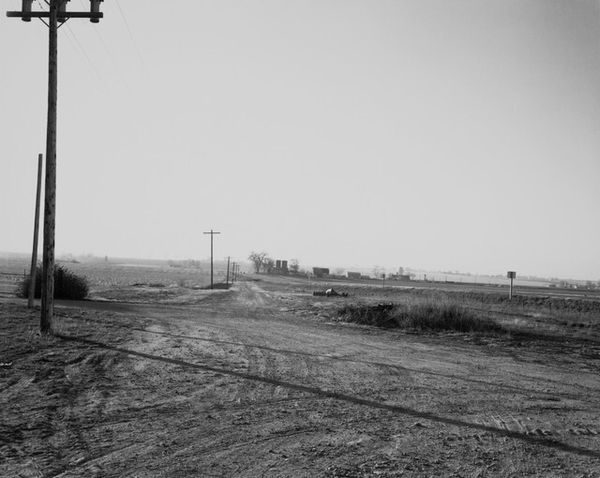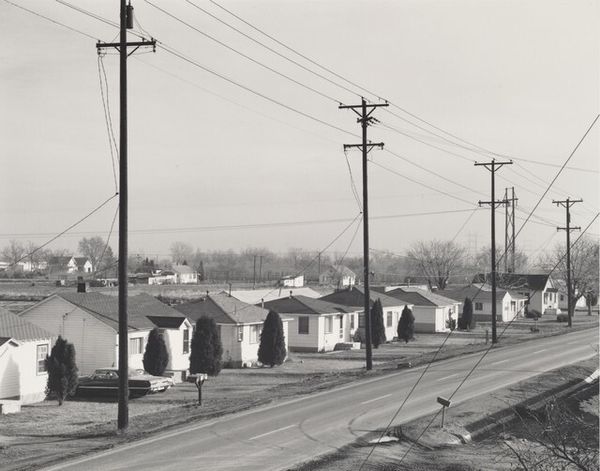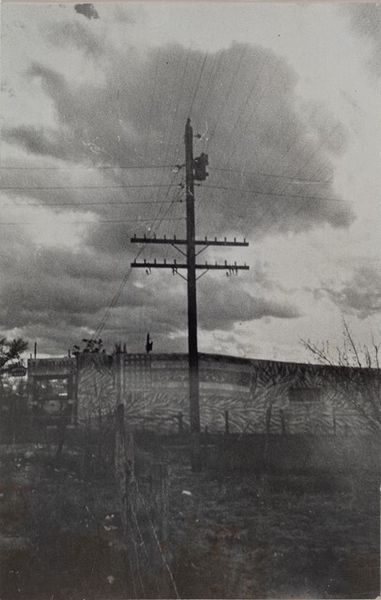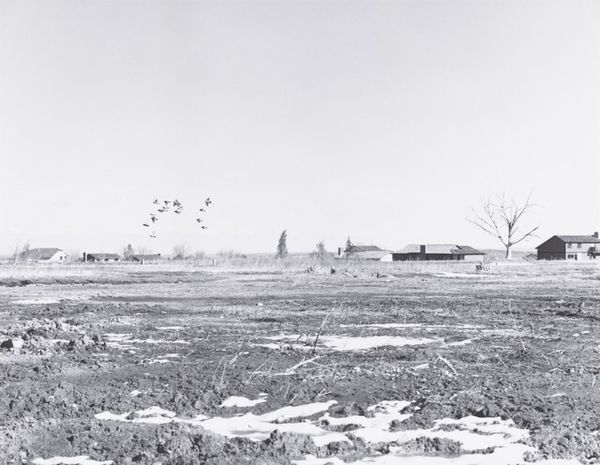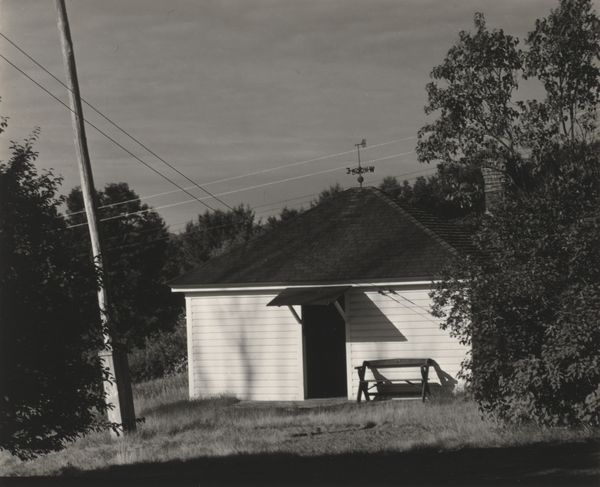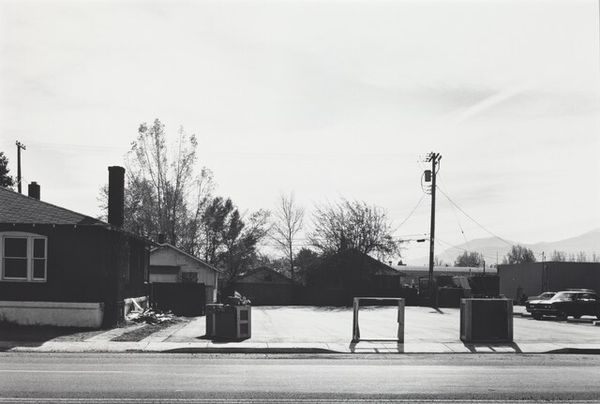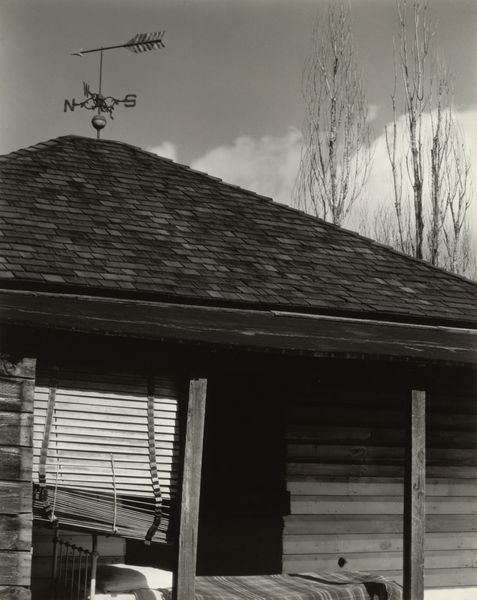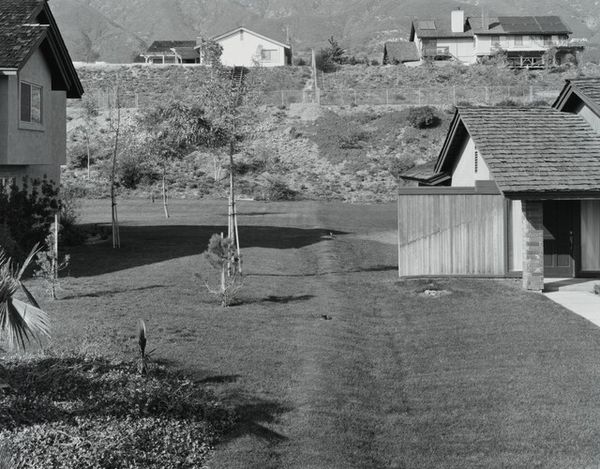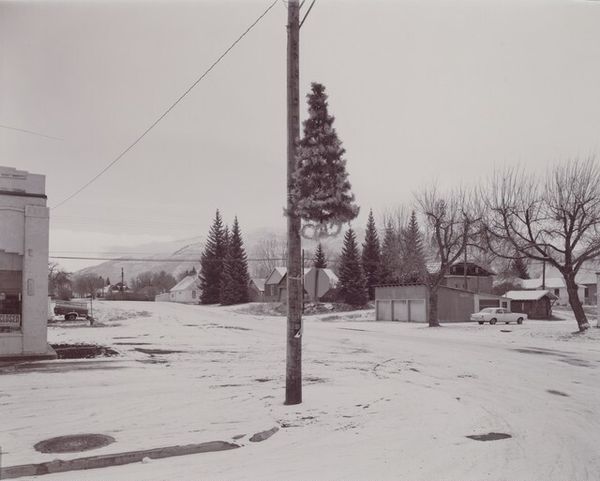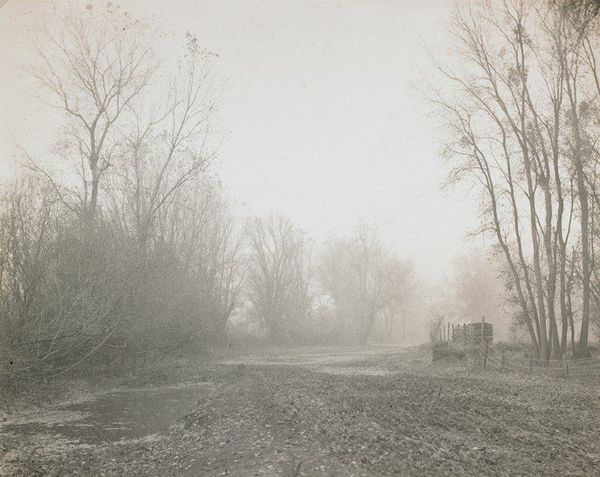
Dimensions: image: 15.2 × 19.2 cm (6 × 7 9/16 in.) sheet: 27.8 × 35.5 cm (10 15/16 × 14 in.)
Copyright: National Gallery of Art: CC0 1.0
Curator: Looking at Robert Adams' "North edge of Denver," a photograph created sometime between 1973 and 2008, I immediately sense a somberness, almost a bleakness. The monochromatic palette and stark composition evoke a feeling of isolation and perhaps environmental unease. Editor: Yes, the lack of color definitely amplifies that feeling. Visually, the strong verticals created by the stark tree, the utility pole, and the distant smokestacks create a visual rhythm that's disrupted by the more chaotic branches, underscoring the tension between nature and industry. Curator: That tension is a key symbolic element. The gnarled tree, a recurring motif in Adams’ work, often signifies a wounded landscape. Note the “No Fishing” sign, a direct indication of environmental impact. What do these powerlines bring to the overall sense you're experiencing? Editor: They’re functional but visually intrusive, bisecting the sky, another of these verticals that compartmentalize the skyscape, and creating a web that contains and divides it. There is no space for contemplation, for sure, the feeling is tense and nervous. Curator: I agree. The skyscape becomes another area to control for civilization, and, thinking anthropologically, it mirrors our psychological state of unease when the environment is perceived as threatened. Also, there's a ghostly quality from that chimney smoke behind them as a sad reminder of urban activity that comes in sharp contrast with rural elements. Editor: In structural terms, the placement of that tree acts as a framing device, almost a curtain, between the foreground—the raw, untamed earth—and the industrial horizon. Is this tension intended to evoke change, a transformative state? The photo acts like an objective record, not explicitly sentimental or sensational. Curator: Yes, Adams doesn’t overtly judge, but his selection of details—the withered tree, the polluting smokestacks—becomes a silent indictment. I consider that Adams asks us to engage in a deep-thinking process to value land conservation and the overall impact of our urban progress. Editor: Well, "North edge of Denver," becomes more than just a photograph. It's a document and an invitation for reflection on our role in the environment. Curator: Indeed. By drawing on iconic visual languages and symbols, he prompts us to examine our cultural relationship with the land. Editor: Absolutely. Its power resides in this careful orchestration of form and the unsettling symbolism that pervades every corner of the frame.
Comments
No comments
Be the first to comment and join the conversation on the ultimate creative platform.
